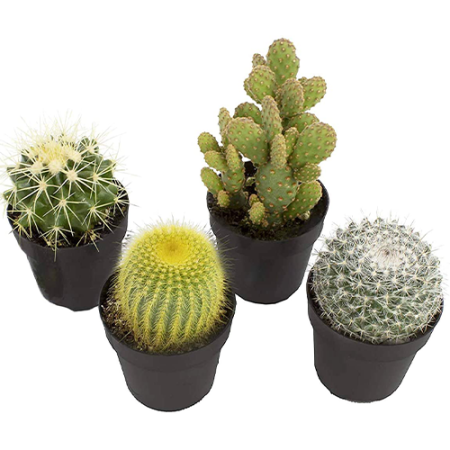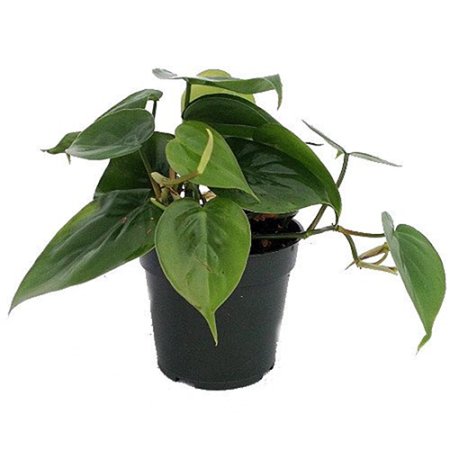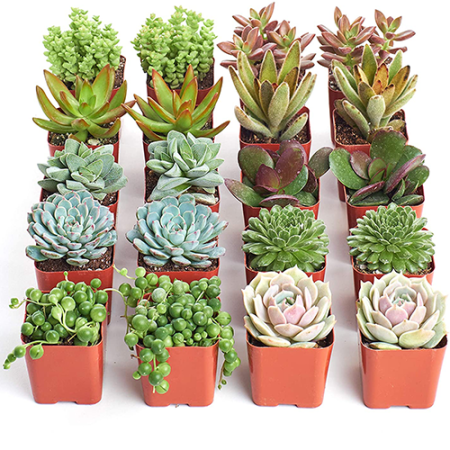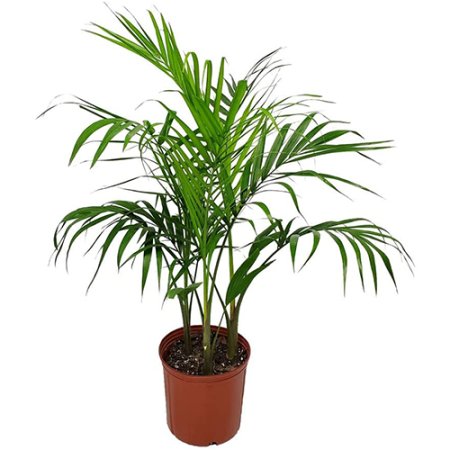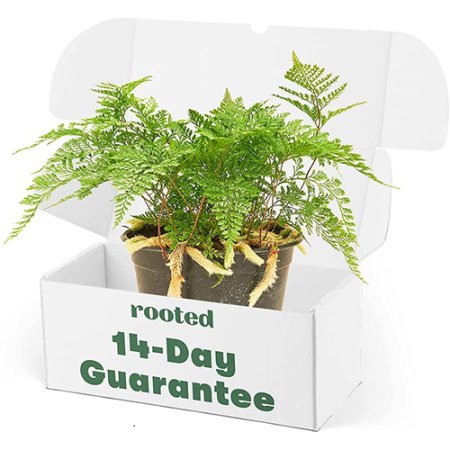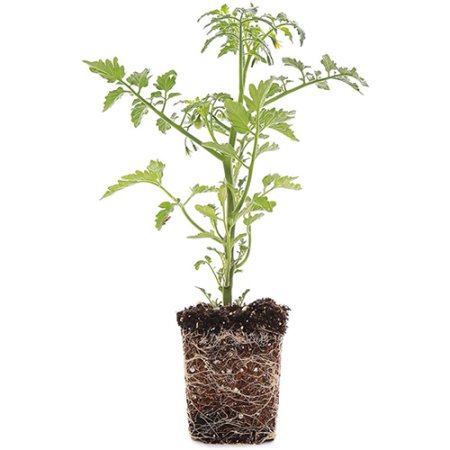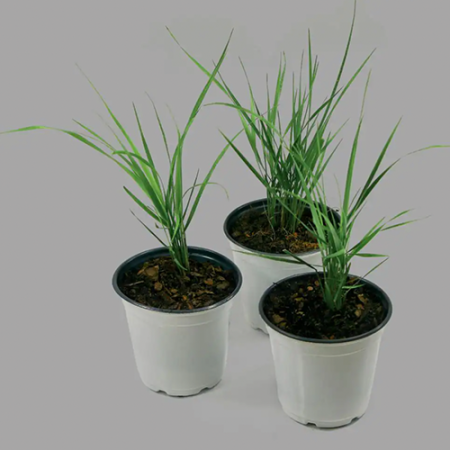We may earn revenue from the products available on this page and participate in affiliate programs.
Reading up on Domino’s shopping guides is like having your own personal product concierge. We do the tedious part—deep-dive research, hands-on testing, and tapping experts for advice—so all you have to do is hit “add to cart.” That’s why we call them Simply the Best.
You’ve poured the concrete, laid out your pavers, or pieced together a bunch of IKEA deck tiles on your balcony. You’ve even assembled the perfect mishmash of weather-resistant wicker furniture. But if something still feels like it’s missing, it’s probably the best patio plants.
Not just a wellness booster for the indoors, leafy greens can help create the ultimate outdoor oasis, even if you happen to have a backyard with large oak or maple trees nearby. Dress up your dining table with a cluster of cacti or put up a natural wall of privacy to block nosy neighbors with feathery palms. Whether you’re searching to fill a single container or an entire garden bed, our list of tall and small stems is a great place to start.
Our recommendations, however, do come with a caveat—not every plant here is ideal for every sort of climate. It depends on how much sun your space is exposed to, explains plant specialist and stylist Hilton Carter. “Some plants love to be under the sun all day long, but most others do not,” he stresses. In other words, your choices will be limited based on whether your patio falls under north-, south-, west-, or east-facing sun. It’s the sort of information you’ll definitely want to have handy for both an online shopping spree or visit to your local nursery. So get your compass ready, enjoy the inspiration, and start potting.
Our Favorites
- If you have a bright backyard: Bird-of-Paradise
- If your space feels like a desert: Cacti
- If you have a pergola: Philodendron
- If you want to dress up your dining table: Succulents
- If you need some privacy: Majesty Palm
- If you have a covered patio: Ferns
- If you get a lot of morning sun: Tomatoes
- If you live near a breezy beach: Tall Grasses
If You Have a Bright Backyard: Bird-of-Paradise
Average life span: 50–150 years | Temperature range: Tropical, USDA zones 9–12 | Shade vs. light: Direct light preferred
What we like:
- Pretty hardy
- More likely to flower outdoors
- Large, fan-shaped (sometimes droopy) leaves
Worth noting:
- Slow growing
Why we chose it: Its signature orange flowers feel like a vacation without the trip.
People say the giant bird-of-paradise does well in bright, indirect light, but if you really want it to flower, place it directly in the sun’s path, where its large leaves can soak up rays all day long. You can spot clippings in Kellie Brown’s postmodern patio. (Just be sure to transition it outdoors gradually if you spent the winter months nursing it inside your home!) Often mistaken for a palm or banana plant, this tropical green flourishes in humid climates, so it will certainly appreciate the occasional misting or summer rain shower. But beware the garden hose: While hardy, the flowers can be sensitive to unfiltered water.

If Your Space Feels Like a Desert: Cacti
Average life span: 10-plus years | Temperature range: Desert, zones vary on type and soil | Shade vs. light: Direct light
What we like:
- Thousands of species to choose from
- Drought tolerant
Worth noting:
- Requires well-draining soil
Why we chose it: They thrive in places that are constantly bathed in light, like southern-exposed sun.
If you are trying to re-create a Joshua Tree vibe, live in a superhot, dry part of the country (we’re looking at you, Arizona and Texas), or just have an outdoor situation that offers zero shade, cacti might be the only option. Like humans, a lot of plants are sun- and heat-sensitive—without some form of protection, they can shrivel and burn quickly. It’s a lesson Carter learned the hard way. When he moved into his home in Baltimore, he inadvertently left a few plants out in his southern-facing backyard, and some leaves turned brown in a flash. His back deck is now reserved for cacti only. Good thing they come in all shapes and sizes!

If You Have a Pergola: Philodendron
Average life span: 20-plus years | Temperature range: Tropical, USDA zones 11 and 12 | Shade vs. light: Bright, indirect light
What we like:
- Grows quickly (especially in the spring and summer)
- Great for beginners
- Tolerant of nearly every environment
Worth noting:
- Will likely need to repot regularly
Why we chose it: A sweetheart-shaped trailing plant that loves to hang up high.
The term philodendron encompasses all sorts of hanging, evergreen perennials widely found in tropical environments. Similar to pothos, these beginner houseplants are a favorite of less-than-green thumbs because they don’t mind a little neglect or a permanent low-light scenario. But your philodendron will also blossom (though not literally) outside once temperatures rise above 50 degrees. With a tolerance for moderate humidity and sun, it’s the perfect candidate for hanging from a pergola ceiling or hook—just as Camilla Blackett did with hers—preferably in a covered spot with some exposure for the vines to fully stretch out and grow.

If You Want to Dress Up Your Dining Table: Succulents
Average life span: Most can live 50-plus years | Temperature range: Varies depending on type | Shade vs. light: Indirect light
What we like:
- Can go months without watering
- Variety of appearances and species
Worth noting:
- Susceptible to root rot when overwatered
Why we chose it: These petite plants make entertaining a breeze.
Succulents often get roped in with cacti thanks to their water-retaining leaves and success in arid climates, but these drought-tolerant mini plants, while hardy, aren’t as good in harsh bouts of light. Most only need a half day’s worth of sun, preferring east- or west-facing exposure or a permanent perch under dappled light coming in through tree branches or the gaps in a roof covering. A big part of their appeal lies in mixing and matching a selection of small potted varieties to dress a dining table—they make excellent centerpieces and napkin weights—or create an elegant container garden (try stonecrops, hens and chicks, and dudleyas, for a start). If you’re looking for inspiration, we love the trailing arrangements (shout-out to the string-of-pearls!) in Jessica Ayromloo’s outdoor dining setup.

If You Need Some Privacy: Majesty Palm
Average life span: Depends on if it’s potted or planted | Temperature range: Subtropical, USDA zones 9–11 | Shade vs. light: Needs both, prefers north-facing (bright, indirect) light
What we like:
- Jungle vibes
- Low-maintenance
- Can grow to tree height
Worth noting:
- Dries quickly
- Slow growing
Why we chose it: Growing one is easier than building a fence.
Don’t want to go all in on a Jurassic Park–level backyard? Consider this: A privacy screen of majesty palms can be a more cost-effective, less labor-intensive way to create distance between you and your neighbor than a fence. (We like bamboo, silver saw, parlor, and cat palms, too.) They’re also a better option than, say, a boxwood hedge if a view is your priority. And since these treelike plants can withstand a dip in temperatures as low as 35 degrees, you can place them right in the ground if you live in a Southern state. A north-facing space is best for their tall, feather-like fronds, but if your exposure is on the sunnier side, use some cover to ensure they get a few shady hours.

If You Have a Covered Patio: Ferns
Average life span: Close to 100 years | Temperature range: Varies, but typically zones 2–9 | Shade vs. light: Shade or indirect light
What we like:
- Does well in low light
- Versatile—can be potted, planted in the ground, or hung
- Pet-friendly
Worth noting:
- Grows from spores
Why we chose it: They’re the stars of every shade garden.
No light? No problem. Ferns thrive in shady northern exposures, making them a great addition to any covered patio, porch, or balcony, where it can be harder for the sun’s rays to penetrate. But they’re also incredibly flexible in terms of environment: They’ll grow in cold, wooded areas in mountainous states up North or mossy, humid places down South. Ferns also don’t mind being potted and hung or fully submerged in the ground. If you’re looking to plant more than one, be sure to give them ample room for their roots to grow; though your garden may look a little sparse at first, in a couple summers you may have a few more than you originally started with.

If You Get a Lot of Morning Sun: Tomatoes
Average life span: Seasonal | Temperature range: Varies depending on choice | Shade vs. light: Direct light
What we like:
- Affordable
- Enjoy their company as early as March or April, depending on where you live
- Edible flowers-turned-food
Worth noting:
- Need 6 to 8 hours of sun
Why we chose it: Herbs, tomatoes, strawberries—these plants feed our bellies and our souls.
If having your own edible garden is a dream—and you don’t live somewhere warm enough to have fruit trees—head to your local hardware store or nursery and stock up on seasonal plants. In the front yard of photographer Elizabeth Messina’s Los Angeles home, you can spot plenty of succulents and rows of Texas privet trees. But behind these bushy branches are low-cost, high-reward potted herbs like rosemary and basil, as well as strawberries and tomatoes. If you want to bring home the look, keep in mind for a plant like the tomato to bear fruit, it will need a solid amount of sun—about six hours, especially in the morning, when the light isn’t too hot or intense yet but still feeding. Or just dress up an entrance or driveway with new flowers every spring (Plantgem offers an all-in-one tool kit).

If You Live Near a Breezy Beach: Tall Grasses
Average life span: Seasonal | Temperature range: USDA zones 5–9 | Shade vs. light: Direct light
What we like:
- Sold as a set of 3
- Can grow 6 feet tall
- Aids with soil erosion (which is quite helpful in sandy areas)
Worth noting:
- Karl Foerster grass flowers earlier compared to most other grasses
Why we chose it: Tall grasses are key to tranquil outdoor spaces, especially while bending in the wind.
For a tranquil escape, planting tall, feathered, perennial grasses where wind is an everyday occurrence offers a soft, whimsical sound that’s as sweet as a lullaby. They are also a go-to patio plant of Yardzen design director Kevin Lenhart, who is specifically a fan of big bluestem and calamagrostis (aka Karl Foerster grass), which he says will “give you the height you are looking for without a hulking visual presence.” It does great near water, whether it’s a pond, pool, or—if you’re superlucky—beach (like where designer Alex Boudreau’s family vacation home is in Todos Santos, Mexico).

How We Chose These Products
After thorough research, we found that the best outdoor spaces—every patio, porch, balcony, and terrace in our archives—featured plants. Here, we’ve highlighted the most common appearances and reached out to experts like plant influencer, Hilton Carter, as well as the outdoor designer and the design director and head of horticulture at Yardzen for tips on how to determine which is the best patio plant for your individual space. Everyone we spoke to agreed that climate is the biggest factor.
Our Shopping Checklist
Climate
For Carter, the sun is the most important factor to consider when finding the right plant. For instance, his south-facing deck is only suitable for desert plants, mainly cacti, which can take on 90 days’ worth of summer heat and direct sun. In a north-facing situation, you likely experience a lot of shade; with east- or west-facing sun, you enjoy the most light either in the morning or evening. But exposure shouldn’t be the be-all and end-all, he adds. “You might have a tree, you might be in the shade of a nearby building—this is the kind of information you need to bring with you to the nursery,” he says.
For Lenhart, the weather is the main determining factor. “You should always choose plants suitable for your climate, whether they’ll be in containers or in the ground,” he notes. Climate comprises a number of factors, from temperature to soil moisture to general humidity.
No matter which plant you choose, acclimation is important. “When you first bring your indoor plants outside, don’t be surprised if they show signs of shock for a week or two. They might lose a leaf or the foliage might discolor,” warns Carter. But it’s nothing to panic about. To ease them into it, slowly accumulate outdoor exposure by the hour each day. “Once you do get them in the right light, you’re going to see a lot of new growth.”
Water Schedule
Just because you’re bringing plants outside doesn’t mean you get to water them less by letting Mother Nature do its thing entirely. In fact, you might be filling up your watering can even more than usual. Sun, wind, and higher temperatures all contribute to drier soil, so you should prepare for a more frequent drinking schedule even if your plants don’t traditionally need a lot of H2O. Instead of mindlessly showering your green friends, Carter suggests either investing in moisture meters or testing out the soil first. If the dirt is damp or cool to the touch, skip turning on the garden hose; if it’s feeling a bit dry and brittle or you spot curling leaves and an overall droopy silhouette, your plant is likely parched. (In the summer, you’ll probably be watering every day or every other day.) Just be sure to do so either first thing in the morning or at ‘magic hour,’ advises Carter, for a dusk dining experience. Water on leaves in hot weather can heat up and burn your plant.
Styling
If you’re a tall person like Carter, then you’re probably used to being ushered to the very back of a group photo. You can take the same approach to layering plants, he offers, by placing them in tiers. Line up bigger plants in the back toward your house, fence, or a wall so they don’t cover up the smaller plants, which can fill in at the front. This also helps when storms roll through, as the larger plants are less likely to blow over and crush other pots.
Otherwise, Lenhart finds species selection is one way to fortify a design style. “If you have a modern vibe with a decomposed granite or concrete patio, ornamental grasses and succulents can give it a desert twist,” Lenhart shares. “If you are more traditional, with brick or natural stone paving, boxwoods and chunky flowers can amplify that classic feel. Borrowing species used elsewhere in a design for patio planting establishes a common theme and helps to link the patio to the broader yard.”
In-ground planting around a patio is another great delineation of space. “Pockets of in-ground plantings or large container plants placed at corners and thresholds imply the outline of outdoor rooms while preserving broad, open edges and free-flowing circulation. Punctuational planting like this is a great trick for maintaining a strong sense of connection between a patio and its surroundings, and is especially useful in yards with limited space,” Lenhart continues. “In-ground planting can have an equivalent or even greater impact on patios than container plants. You can manipulate the sense of openness or enclosure by placing tall or low plants along the edges of a patio. In general, I prefer pockets of planting, leaving plenty of clear space along edges for circulation to flow in multiple directions.”
Ask Domino
Q: What kind of pot is best for outdoor plants?
Not all pots and planters are suitable for the outdoors. Carter’s general rule of thumb: Stick to porous materials. “You’ll want to pick a material that allows moisture to be pulled away from the soil. And please don’t bring anything outside that doesn’t have drainage holes, he adds—if it rains, your plants will be floating in water. So skip the plastic, he advises, unless they’re in their nursery pots with plenty of drainage holes. Then it’s just about picking out one that fits in your space. Carter personally finds desert plants look best in concrete or terracotta, whereas tropicals stand out in chic, glazed ceramic containers.
Then, when ready to pot, just be sure to use potting soil, notes Zolene Quindroy, Yardzen’s head horticulturist. “Avoid topsoil, garden soil, or dirt dug up from the garden. Potting soil is formulated to drain quickly and balance air and water near the roots, and many have slow-release fertilizers built in, which is great for most container plants,” she notes. “In general, you need to water regularly after planting. This is mostly to get rid of any large air pockets around the root ball, which could dry the plant out.”
And be sure to take into account your plant is likely to grow a bit during these warmer months outside. “Best practices call for the plant to be in the neighborhood of one to two times the height of the container, though I’d add that vertical plants like a giant bird-of-paradise or palms look great when they get well above this ratio. Particularly when plants are tucked against walls or tall elements, they can get much taller than their container as long as the container itself is substantial,” points out Lenhart.
Q: Any advice on how to protect my plants during a storm?
Bring your plants inside if you’re expecting strong winds, temperature dips, or damaging hail, suggests Carter. “For plants in the ground, a little extra mulch helps to insulate roots from cold temperatures. For shorter-term protection against a cold snap or stormy weather, you can cover large plants with a sturdy cloth like burlap, and cover smaller plants with overturned buckets or pots. In either case, secure the covering by tying or weighing it down,” adds Lenhart. “Container plants can also be covered for storm protection, but if you have the strength and space to move them inside, that’s an even safer option, whether it’s just to a garage or uninsulated structure. With less soil around to insulate the roots, container plants get hot and cold faster than in-ground plants.”
The Last Word
“Plant foliage creates compelling contrast with hard materials like paving and furniture, and lends softness and a sense of vitality to patio spaces,” says Lenhart. “Pretty much every patio is improved by plants, either in containers or in the ground nearby.”



